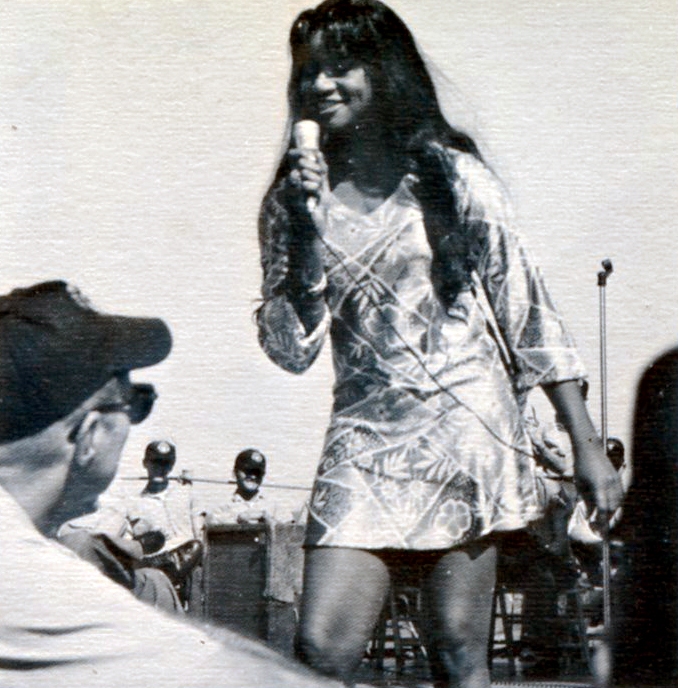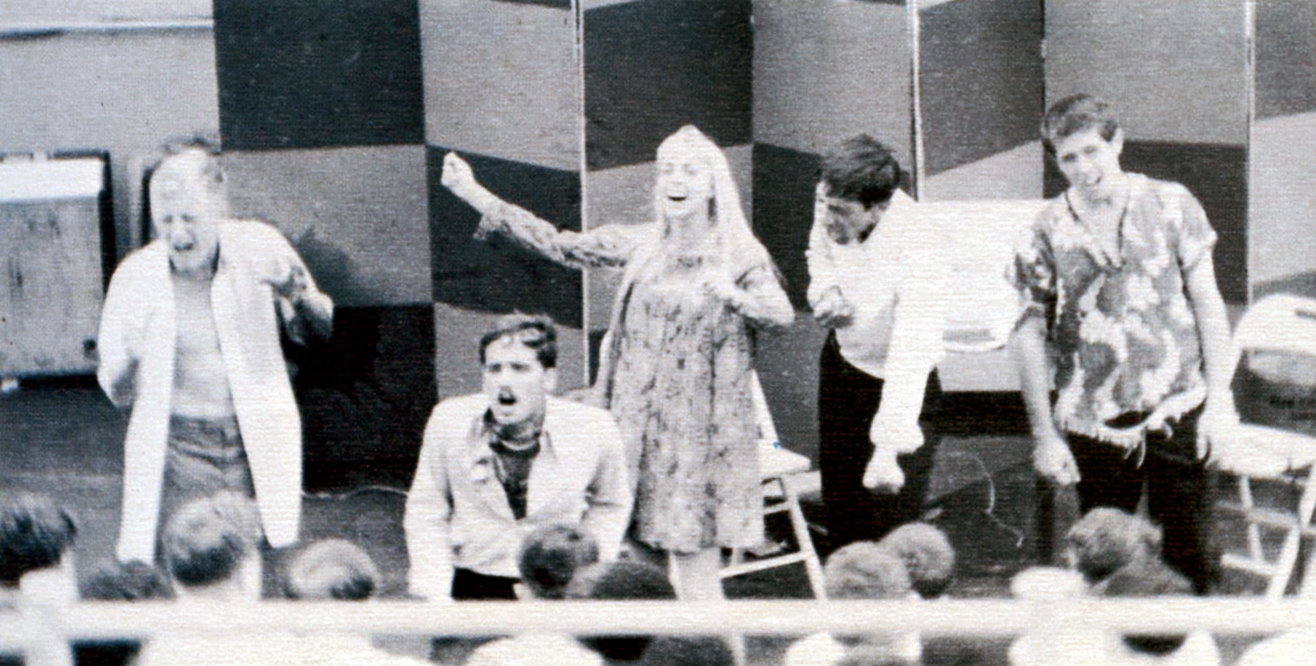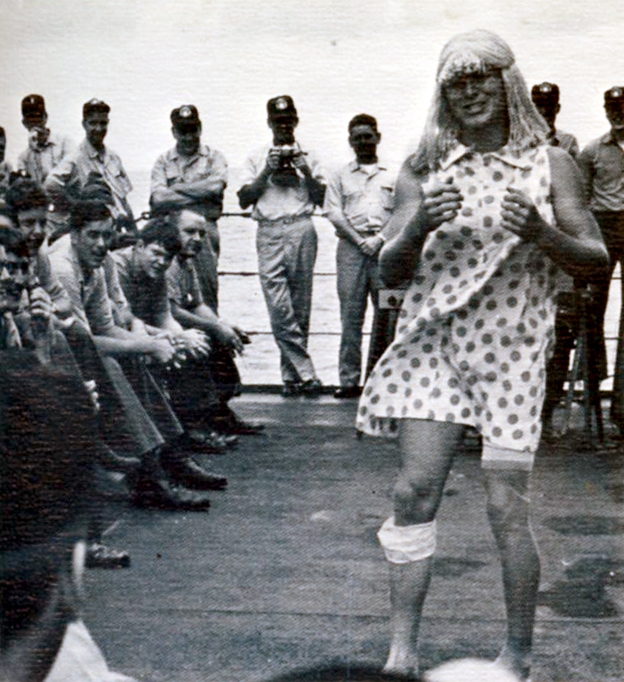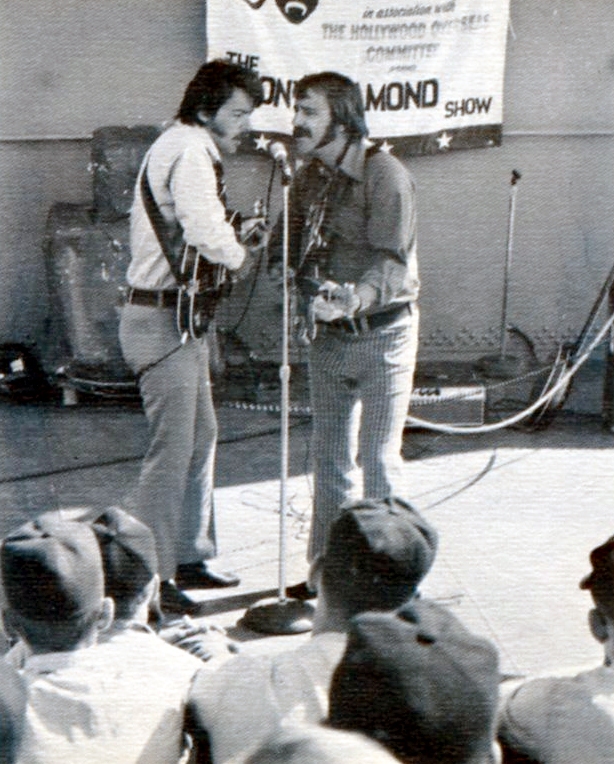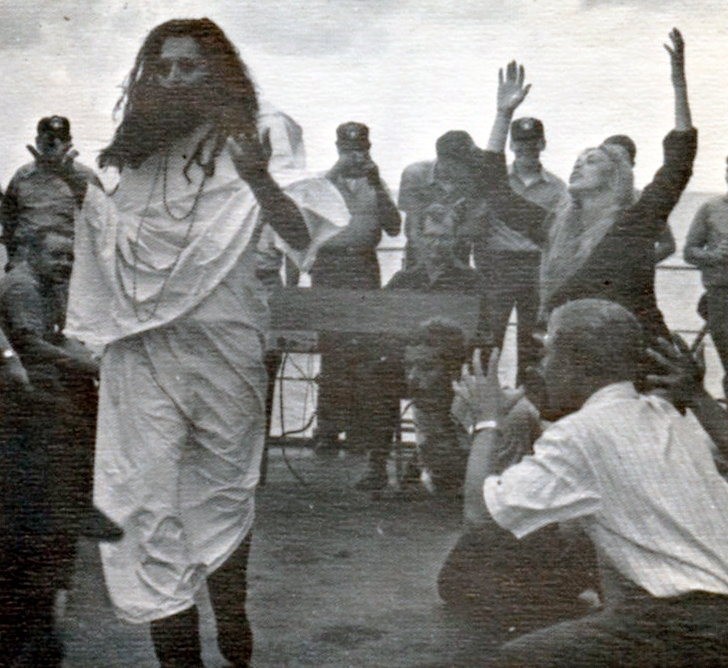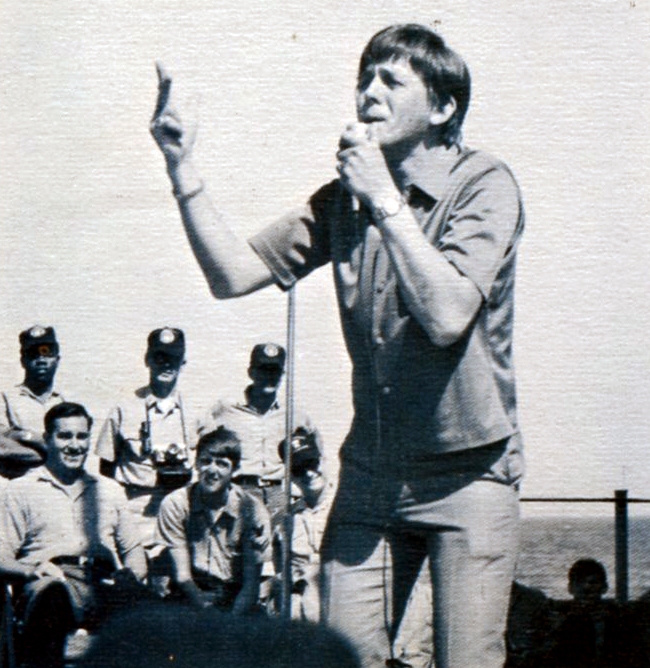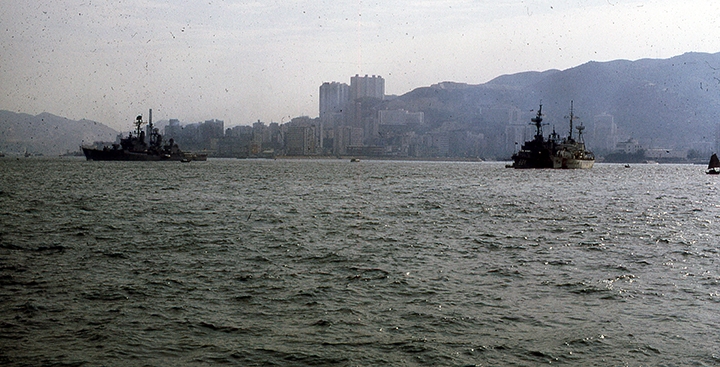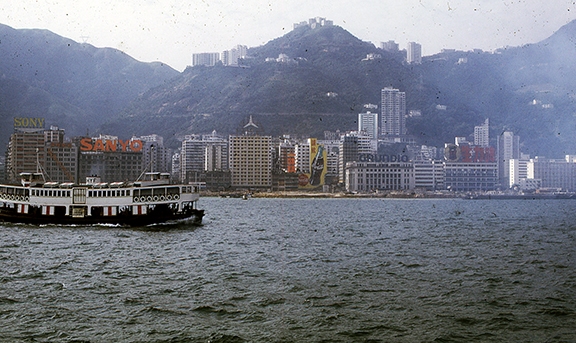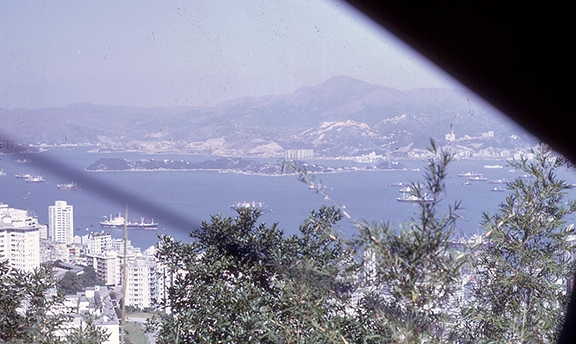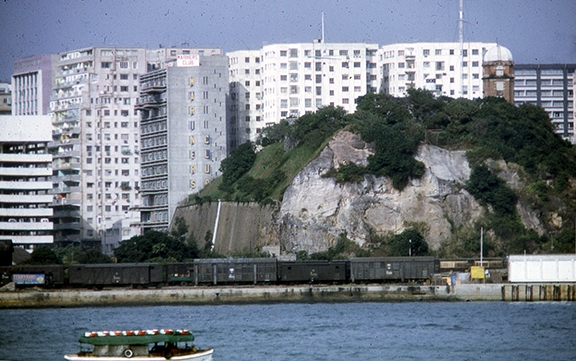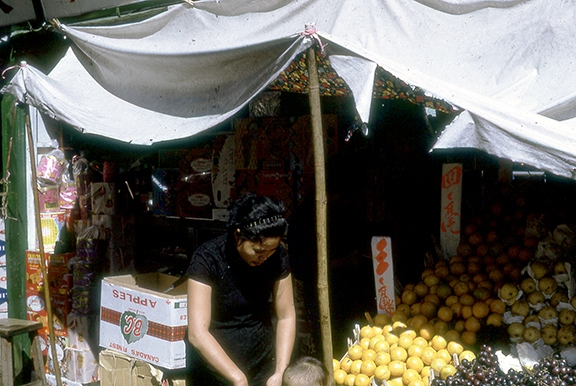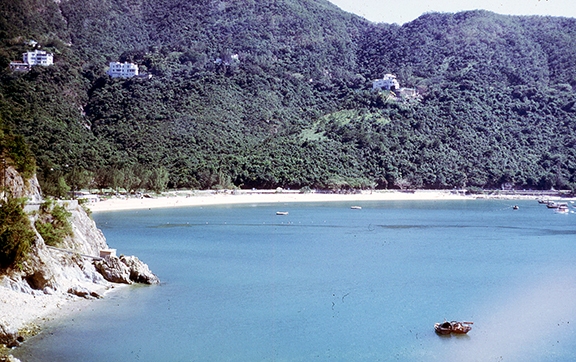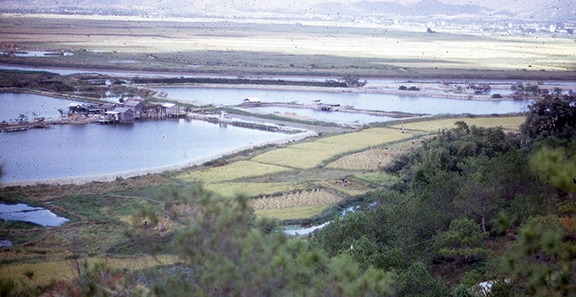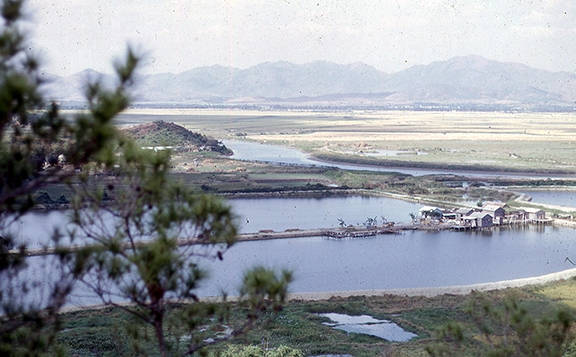I worked with ENS Roberts on the cruise book until about noon. Liberty originally was to expire at 1300, but, due to a delay in refueling, it was extended to 1430. Hey! Time for a few beers!
 We joined others at the Officers Club. Enjoyed a few glasses of a beer I had never had before — “Three Horses.” I was specially struck by the words “Brewed and bottled in Holland specially for the tropics.”
We joined others at the Officers Club. Enjoyed a few glasses of a beer I had never had before — “Three Horses.” I was specially struck by the words “Brewed and bottled in Holland specially for the tropics.”
Wow. A Dutch beer got all the way out to Guam. Certainly the tropics.
I was also surprised to see an advance in technology I would not have expected to see for the first time in Guam. The jukebox played not only music, but also showed a brief movie. “With each song,” I reported in my journal, “you also got a little film showing girls in various stages of undress.” The films had nothing to do with the songs per se, but the film content was enjoyable nonetheless. Though a far cry from MTV, it was the first time I saw anything like it.
We picked up what I described as “some great movies” — Barbarella, Long Hot Summer, Play Dirty, Dr. Zhivago.
Most of the crew had used the few hours ashore to consume amounts of alcohol that were perhaps excessive. On the bridge, as we left the harbor and began rolling significantly, the helmsman demonstrated the effect of such behavior. He barfed. He was relieved, from both his post and his discomfort.
Next stop San Francisco! Only 5,800 miles of the Pacific to go.





